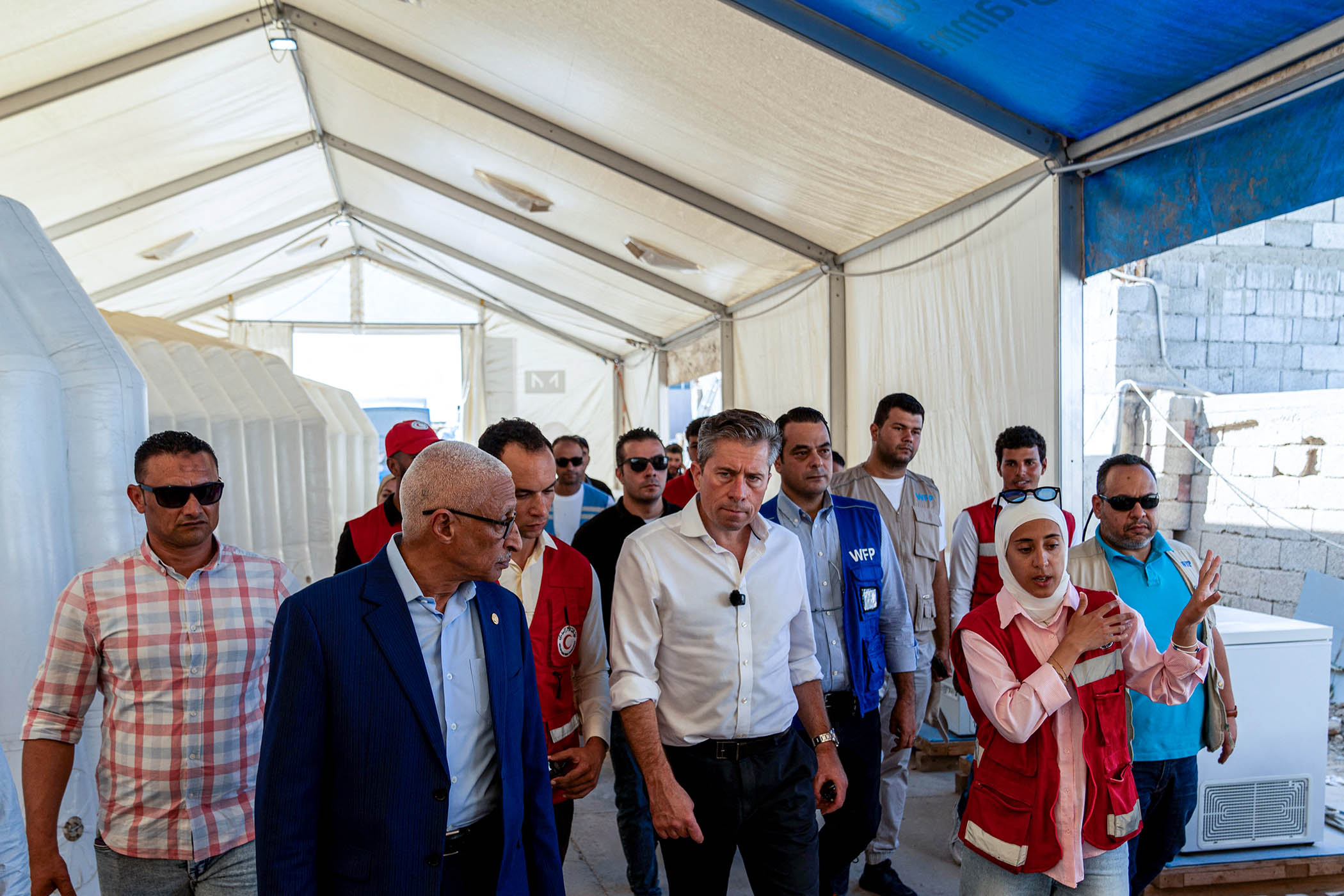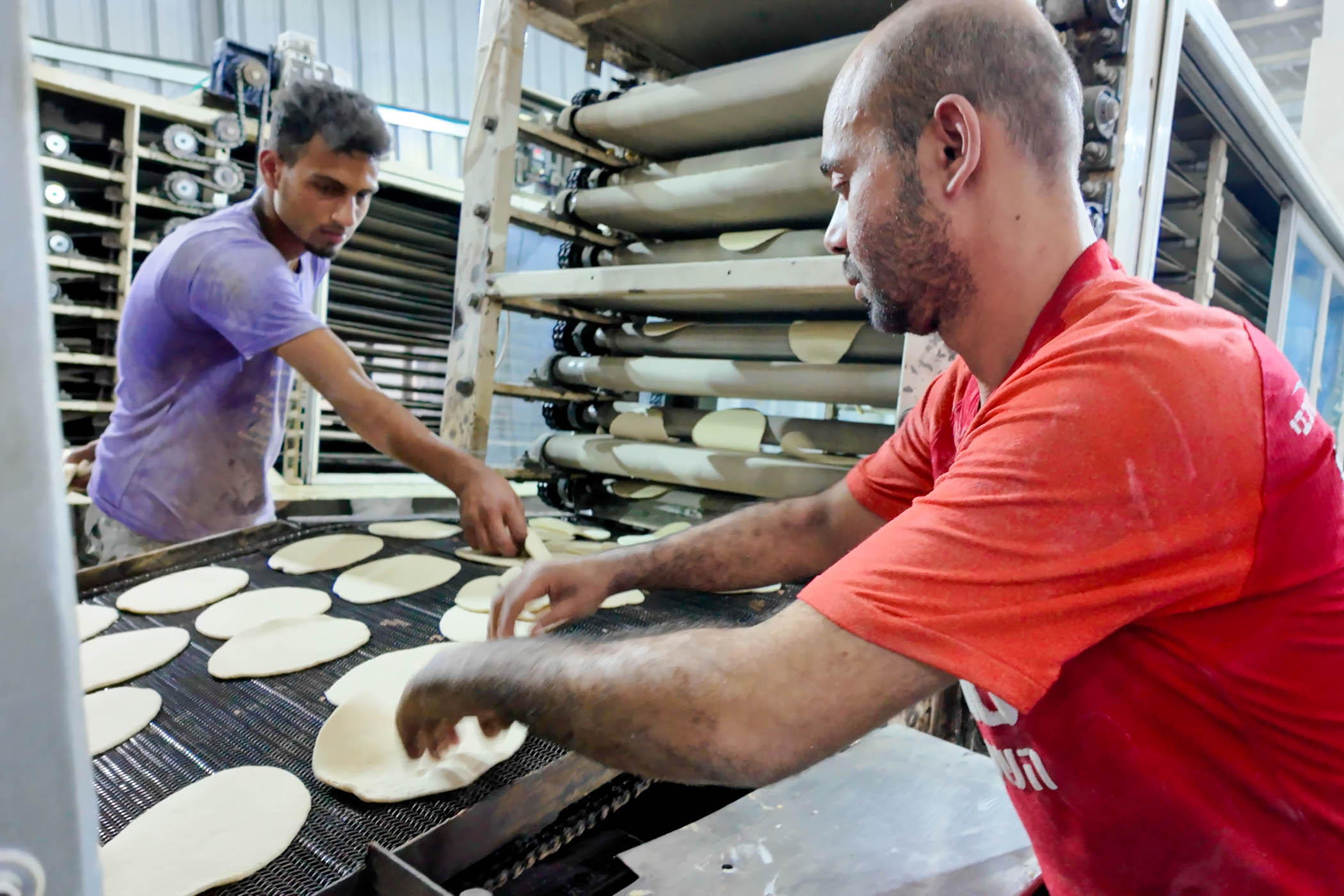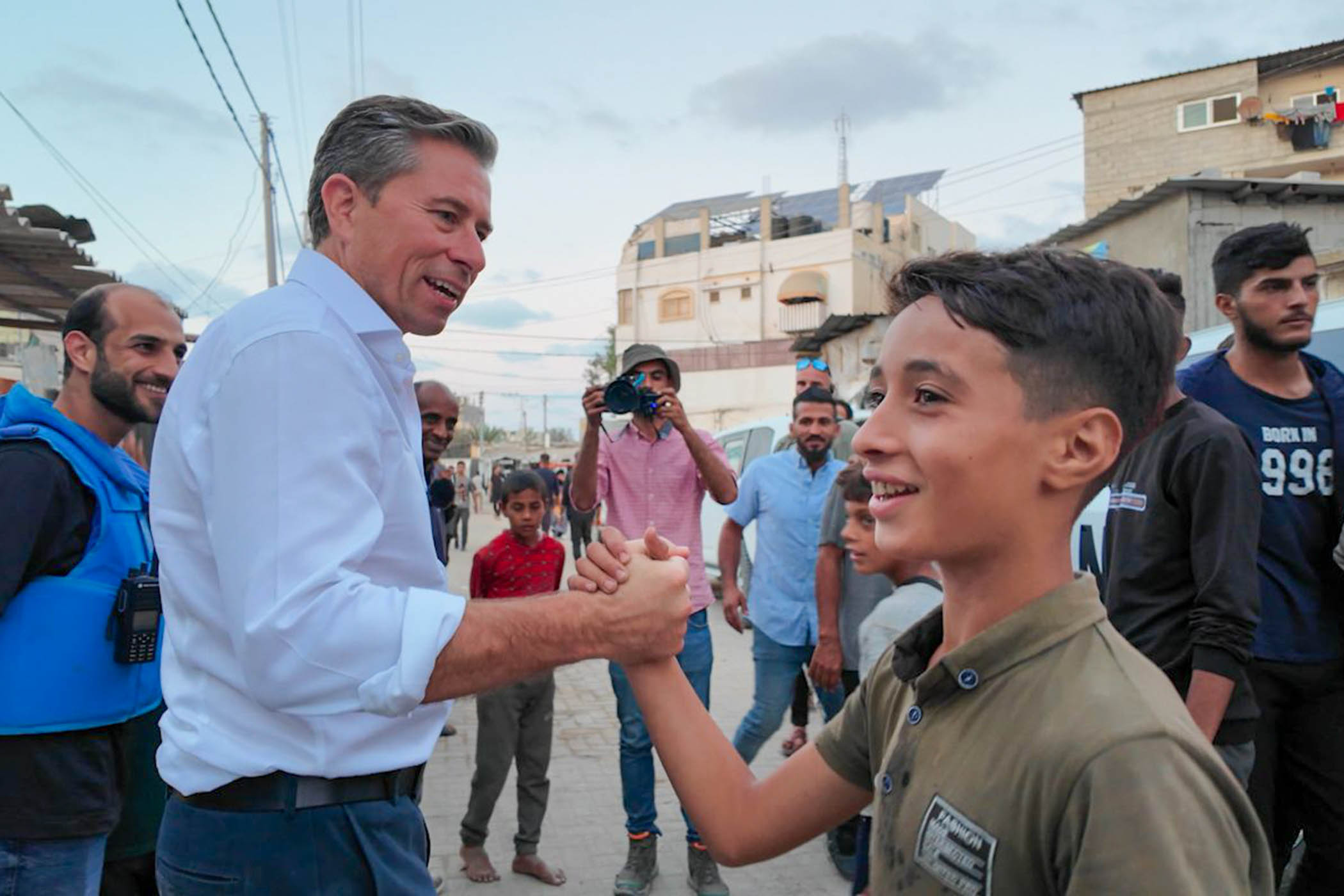Monday 13 October
Sharm el-Sheikh, 2am
Touchdown in Sharm el-Sheikh, Egypt, for the Gaza peace summit. The UN secretary-general lands in two hours. Thinking through the choreography ahead – the discussions, the optics, the stakes. Twenty world leaders under one roof – a rare yet fragile constellation. Gaza hangs in the balance: 2.1 million people need aid and we are fighting starvation.
But I am also still reeling from the past 72 hours – briefings, calls, crises and caffeine.
I’ve been in the region since last week – Kuwait, then Saudi Arabia, then Cairo – strengthening our strategic partnerships. I met with senior leaders including the Crown Prince of Kuwait, the Saudi foreign minister, the Egyptian foreign minister and many of our humanitarian partners.
The Gaza peace summit unfolds. The four mediators of the Gaza ceasefire deal – President Donald Trump (US), President Abdel Fattah al-Sisi (Egypt), President Recep Tayyip Erdoğan (Turkey) and Emir Sheikh Tamim bin Hamad al-Thani (Qatar) sign the document that supports the ceasefire. It is extraordinary. There is cautious optimism in the air. Palestinians and Israelis can look forward with greater security, justice and opportunity. But now, we must restore trust and hope through action.

Fletcher visits the Red Crescent logistics centre and meets humanitarian workers in Al Arish on Thursday
Tuesday 14 October
Sharm el-Sheikh
We have a plan to deliver vital aid to Gaza and turn the tide on the Gaza famine. It’s a 60-day plan that is detailed, tested and in place. Our supplies, 170,000 metric tonnes of food, medicine and other supplies, are in place. Our teams, courageous, expert and determined, are in place.
My day is a flurry of meetings, calls and emails. I’m working every contact from yesterday’s summit as well as old allies, new openings, anyone who can help shift the needle. Since I started this job last year, I’ve expanded my map of relationships across the region. I already know a lot of people from my years as a diplomat. Now every contact matters. We need food, medical supplies, tents, nutrition supplements, fuel, cooking gas. We need more functioning crossings and corridors that hold. We need basic infrastructure.
And we need money — fast. The $4bn Flash Appeal [to provide aid to Gaza and the West Bank] is only 32% funded. Without resources, everything grinds to a halt. I thank those who’ve stepped up – the US, the EU, Qatar and many others including the UK – but we need more. I’m calling for an outpouring of generosity.
While Gaza dominates attention, another crisis continues. In Ukraine’s Kherson region, a UN aid convoy of four clearly marked trucks came under Russian attack. Artillery fire began as the convoy arrived and during offloading two trucks were struck by drones and set ablaze. No one was injured, but the vehicles were destroyed.
But here, now, the sun is setting over the Red Sea. Tomorrow we head to Cairo.
Wednesday 15 October
Cairo
It’s now five days since the ceasefire came into effect. The scale of the need in Gaza is daunting, but we’ve done it before, and we’ll do it again. The logistics alone are hard to comprehend: the crossings, the convoys, the clearances.
I meet with the Gaza Humanitarian Team – our key UN partners on the ground and the Egyptian Red Crescent. We go through the plan, line by line, agency by agency. Food pipelines, medical stocks, security corridors. This is a reality check.
A crucial part of the work is with the member states – the politics behind the trucks. The key partners in this deal – the US, Qatar, Egypt, Turkey – each hold a piece of the puzzle. Keeping them – and many other key member states, including the UK – on board and aligned with what we are trying to achieve is key. We need them to understand how we work on the ground, so they can help fix the problems fast when they arise.
Every spreadsheet hides a human story: a meal, a life, a moment of safety. There’s no time to lose.
Thursday 16 October
Cairo to Al Arish to Rafah
I’m up before dawn for the six-hour drive to Al Arish – a coastal city in Egypt just 28 miles from the border with Gaza. It is now a staging point for relief efforts into Gaza.
At the Rafah crossing when I get there, there’s movement – real, visible progress. I meet the governor of North Sinai, visit the Egyptian Red Crescent warehouse and logistics hub. I speak with humanitarian workers coordinating the flow in Gaza through the Kerem Shalom border crossing.
Trucks – dozens of trucks – stacked with food, medicine and tents, roll into Gaza via Kerem Shalom. Standing at Rafah, I can see it, feel it: the start of something working. After weeks of plans and pressure, the aid is moving. A good day, finally.
I also visit Al Arish hospital, where I meet Palestinian evacuees brought here during the last ceasefire. They want to get well, go home and rebuild their lives. It’s hard not to feel frustrated and, honestly, deeply upset.
Our delivery lines are coming alive again. Support to bakeries and community kitchens has restarted; food and nutrition supplies are getting through; clean water and medical kits are being distributed. There are still bottlenecks and clearances to fight for, but the humanitarian lifeline is back in motion.
Today 950 trucks cross into Gaza through crossings that Israeli authorities control, including 11 trucks carrying fuel and gas. These numbers reflect trucks sent through the commercial sector, bilateral donations, and the UN-coordinated system combined.
We found a hotel for the night in Al Arish. It is bustling with journalists, diplomats and aid workers, but we get a room. The plan is to cross into Gaza tomorrow, if the permissions line up. For now, it’s enough to know the trucks are rolling. It’s 3.15am.

Under the ceasefire, workers at the Castle Bakery produce up to 300,000 pitta breadsa day
Friday 17 October
Deir al Balah, Gaza
The Office for the Coordination of Humanitarian Affairs (OCHA) team is extraordinary – logistics for this mission have been a marathon of permits, authorisations, and security clearances. Finally, the stamp. I cross from Egypt through the Israeli side of the Kerem Shalom crossing into Gaza.
Nothing prepares you for Gaza.
The scale of destruction, the density of loss, the quiet resilience in people’s eyes. My teams – in Gaza, the West Bank, Egypt, Jordan, across the region and at HQ – are working around the clock. No sleep, no pause, just determination to keep the lifeline open.
In Deir al Balah I visit Castle Bakery, one of nine bakeries that the World Food Programme supports with fuel and ingredients across southern and central Gaza. It once served thousands of families in Khan Younis. Now, under the ceasefire, the ovens are burning again and 300,000 pieces of pitta bread emerge each day. It feels jubilant.
Later, I meet the heads of UN agencies and other humanitarian workers, including our brave and selfless OCHA staff who have lived and worked in Gaza through two relentless years. I listen to the stories, the struggles – and the slivers of hope. Each conversation reminds me of what is at stake.
All ceasefires are fragile, but the ceasefire is holding. And there is joy too: families reunited, a flicker of normal life. We can’t let this moment slip. We owe it to those who have endured so much to move beyond the cycle of cruelty, terror and revenge.
As night falls, I lie awake – tired but hopeful.
Saturday 18 October
Gaza City
Out early from Deir al Balah, heading north to Gaza City. It is just nine miles. The Gaza Strip is only 25 miles long and 7.5 miles wide. That is roughly the same size as Sheffield or Bradford. Yet every inch tells a story of loss. Gaza is a wasteland. Roads choked with rubble.
A grandmother apologises because she can’t offer me tea. Her home was destroyed a week ago. The dignity of people amid the ruins is humbling. The task ahead feels immense, almost impossible. Being here, seeing it – the scale of it all is staggering.
The crossings must open. More aid trucks are coming through, hundreds a day now, bringing food, tents, fuel, medicine. Cooking gas alone is transforming lives, I’m told. Others tell me they are desperate for eggs. So we need more. Not a trickle, but an avalanche of aid.
I spoke to BBC News and Al Jazeera Arabic live this afternoon, calling on the world to get behind the humanitarian plan. But the humanitarian lifeline is just the start. Rebuilding Gaza – helping people go home, start again – that’s a huge mountain to climb.
Next stop: Kibbutz Nir Oz in southern Israel. Then, if all goes as planned, Ramallah and Jerusalem.
Photograph by Charlotte Cans/UNOCHA, AFP/Getty Images

